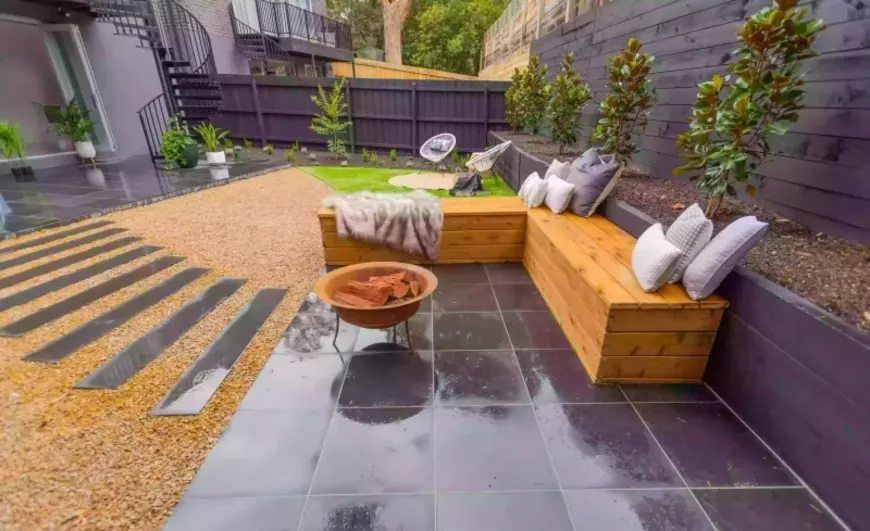Designing a beautiful garden doesn’t have to cost a fortune or require endless hours of upkeep. With thoughtful Landscape, strategic planning, and creative reuse of materials, you can craft an outdoor space that looks incredible year-round with minimal effort. Here’s how to make it happen.
1. Plan Your Garden with Purpose: Design Before You Dig
Every great garden begins with a plan. Before you start planting, take time to sketch your layout, noting sunlight, soil type, and space usage. Thoughtful planning prevents costly mistakes and ensures every element serves a purpose. Consider the principles of professional Landscape Design to create a balanced and functional layout that enhances your home’s overall aesthetic.
2. Choose Hardy, Low-Maintenance Plants That Thrive Naturally
When learning how to create a stunning low-maintenance garden on a budget, the plants you choose make all the difference. The key is to focus on hardy, resilient species that flourish in your local climate without constant care. Opt for plants that can tolerate periods of drought, resist common pests, and thrive in your region’s native soil conditions.
Consider drought-tolerant shrubs like lavender, rosemary, or boxwood that maintain structure and fragrance year-round. Evergreens such as juniper or holly provide lasting greenery even in winter, while ornamental grasses like fountain grass or blue fescue add texture and movement with almost no upkeep.
By selecting plants that naturally adapt to their surroundings, you reduce the need for frequent watering, fertilizing, and pruning, saving both time and money. The result is a lush, attractive garden that practically takes care of itself.
3. Use Native Plants to Save Time, Money, and Water
Native plants are one of the smartest choices for sustainable, low-maintenance landscaping. Because they are naturally adapted to your region’s climate, soil, and rainfall patterns, they require far less water and care than non-native species. This makes them ideal for gardeners looking to conserve resources while maintaining beauty year-round.
In addition to reducing your water bill and maintenance time, native plants promote ecological balance. They attract local pollinators like bees, butterflies, and hummingbirds while providing habitat for beneficial insects and birds. Over time, this creates a vibrant, self-sustaining ecosystem right in your backyard.
Some great native choices might include black-eyed Susans, coneflowers, milkweed, or switchgrass, though the best options depend on your local area. Choosing native species means your garden will not only thrive naturally but also support biodiversity and resilience against environmental stress.
4. Go for Perennials Over Annuals for Long-Term Beauty
If you want a beautiful garden that doesn’t demand endless replanting, perennials are your best friend. Unlike annuals that complete their life cycle in a single season, perennials come back year after year, often spreading and becoming more vibrant over time.
This longevity means lower costs and less labor, you plant once and enjoy lasting results. Many perennials also require minimal fertilization and are naturally resistant to pests and diseases. Popular options like hostas, daylilies, peonies, and coreopsis bring consistent color and form to your garden with minimal upkeep.
Perennials also provide a stable structure for your landscape, giving you a foundation that can be enhanced with seasonal blooms or accents as your budget allows. With the right mix, you can achieve a dynamic yet enduring garden that changes gracefully through the seasons.
5. Master Mulching: The Secret to Low Weeds and Low Watering
Mulching is one of the simplest, most effective techniques for a truly low-maintenance garden. A proper layer of mulch helps retain soil moisture, reduce weed growth, and regulate soil temperature, all while improving soil health as it decomposes.
Organic mulches such as bark chips, straw, compost, or shredded leaves are both eco-friendly and budget-conscious. They not only prevent water evaporation but also add essential nutrients back into the soil, promoting healthy root systems.
For best results, spread mulch about 2–3 inches thick around your plants, keeping a small gap around stems to prevent rot. Replenish it once or twice a year as it breaks down. The result is a neater, healthier, and easier-to-manage garden that requires far less watering and weeding.
6. Repurpose and Recycle: Budget-Friendly Garden Décor Ideas
Creating a beautiful garden doesn’t have to break the bank. With a bit of creativity, you can repurpose and recycle everyday materials to design unique, sustainable décor that adds charm and personality to your outdoor space.
Old containers, buckets, or wooden pallets can be turned into rustic planters or vertical gardens, while used glass jars or tin cans can become quaint lanterns or mini herb pots. Reclaimed stones, bricks, and tiles can form decorative pathways or borders, bringing texture and character to your landscape.
DIY garden projects not only save money but also reflect your individual style. From upcycled furniture to painted rock art, repurposing materials gives your garden a personal touch while reducing waste, a perfect blend of eco-friendliness and creativity.
7. Create Simple Pathways with Affordable Materials
Pathways add structure and accessibility to your garden. Instead of costly paving, use gravel, stepping stones, or reclaimed bricks for a stylish yet affordable solution. These materials blend naturally with your landscape while reducing maintenance needs.
8. Install Smart Irrigation Systems for Effortless Watering
Automated or drip irrigation systems help you water efficiently and consistently. Modern smart systems adjust based on weather conditions, saving time, water, and money. It’s a practical upgrade for anyone looking to sustain a lush garden with minimal effort.
9. Add Structure with Low-Cost Planters and Raised Beds
Raised beds and planters create visual interest while improving soil quality and drainage. You can build them from inexpensive materials like recycled wood, corrugated metal, or even old barrels. This simple addition enhances both functionality and beauty.
10. Keep It Minimal: Less Maintenance, More Enjoyment
Simplicity is the cornerstone of a low-maintenance garden. Avoid overcrowding plants or overcomplicating the layout. Focus on clean lines, balanced proportions, and a few standout features. The result is an elegant, easy-to-care-for space you can truly enjoy.
Final Thoughts: how to create a stunning low-maintenance garden
By applying these principles, you’ll learn how to create a stunning low-maintenance garden on a budget that looks effortlessly beautiful all year long. With a smart Landscape, eco-friendly choices, and a touch of creativity, your garden can be both cost-effective and captivating.





